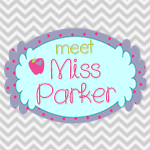This is one of my students' very favorite workstations and it's mine too! You know why? Mostly because I took the time to set it up ONCE and it's ready to go for the WHOLE YEAR, I never have to do a THING to change anything out. It's ready every single day, every single week, after just a little work at the beginning of the year. I call this a "YEAR AROUND WORKSTATION."
First of all, this set of non-fiction passages was purchased from Kayla Parker at Meet Miss Parker. Let me just tell you that it was WELL-WORTH my $14. Did I mention, YEAR LONG WORKSTATION!?
How did I accomplish a year long workstation? There are 26 animal passages (Animal names starting with the letters A-Z). I used 26 of these plastic three prong folders that I knew would last a long time. Luckily, I had enough of the folders that the kids had brought in at the beginning of the year as a "donation" to the classroom. I wrote the name of each animal on the outside of each folder.
Then, I printed the whole set of passages ONCE in color. (Just once...and it'll last FOREVER!) I put one plastic sleeve in each folder in the three prongs with a piece of blank cardstock just to keep it sturdy. (Or you could print the passages on cardstock.) I put one animal passage the sleeve in each folder.
Then, I copied an abundance (30 for me) of the comprehension questions for each animal with the KWL chart that she includes on the back of each set of questions. This stack of papers should last me the whole year, as long as each child only chooses each animal once. I'm sure some kids will want to do some of the animals more than once, and they'll get away with it somehow, but that's why I make sure there are extras in there. Since there are 30 copies, I literally should not have to refill or even TOUCH these folders until NEXT YEAR! Woohoo!!!
Now, I copy the questions on paper so that they can turn them into me. If you have your stations set up in a different type of way and you don't NEED them to have that turned into you, you could actually just copy the questions once and have them in a second plastic sleeve where students could use a dry erase marker to complete the station. That would be an even better win-win center because you wouldn't have to make any copies! Unfortunately, I still feel the need to have my students turn it in to me to show accountability. If I had an assistant in the room at all times that could check the work they do, then it'd work out even better!
I keep all 26 folders (with an originals folder in the back) in a crate. The cover of Kayla's product is so eye catching, so I use that right on the front of the crate!
So, once I got them all pretty and organized in my crate (in alphabetical order, of course), how do my kids use them? (Yes, they are allowed to touch them! LOL) I will say they didn't stay in alphabetical order for very long!
Each student that is assigned this station on their personal work plan is to choose one animal each week (that they haven't done before). They start by filling out the K and W of the KWL chart. Then, they read the passage carefully. I encourage my students to read passages like this three times. Then, they answer the comprehension questions on the other side of the KWL by looking back into the text to find evidence for the answers. If they choose, they can use a dry erase marker to underline parts of the passage as needed, since it's in a plastic sleeve. After completing the questions, they go back and fill in the L of the KWL chart. Their completed comprehension questions/KWL paper is then put in their yellow workstation folder that will all be turned in to me at the end of the week.


Like I said at the beginning, this is one of my favorite stations. I think it's easy to see why I love it so much and why my students do too! My reasons for loving it are, top and foremost, the quality of Kayla Parker's work on the non-fiction passages. It amazes me. Very high quality. (No, she does not even know I'm writing this post! Haha)
Also, like I keep saying, it's a year-long workstation. I took the time to put it together at the beginning of the year, and I haven't had to touch it again. Now, next year it will be even less work for me, I'll just make copies of the questions and stuff each folder. It's not just busy work, it's quality work and covers a large spectrum of standards.
The kids love it because it's about animals and there are a great mixture of animals included. As you can see in the example pictured, there are some unusual animals and animals that are "new" to students. But, there are also animals that are more common and excite the students just as much, for example, the lion is a big favorite.
Even without purchasing this exact product, you could easily create a similar year long workstation crate with other nonfiction passages that you already have, then placing the comprehension question copies in the folders. In fact, I'm already trying to think of another year-long comprehension station that I can create! I have tons of comprehension passage books that I could possibly make copies of for next year and do another crate with a creative name! I'm also waiting for Kayla to create another set of passages!
Check out
Abbie's Workstation Wednesday blog post today!













































